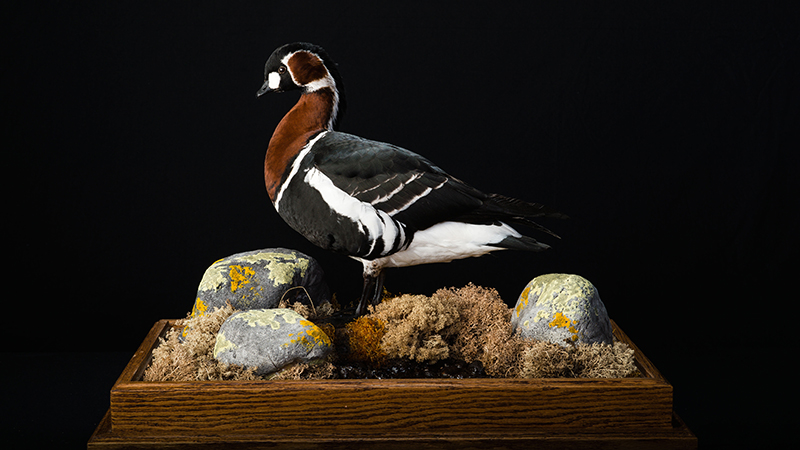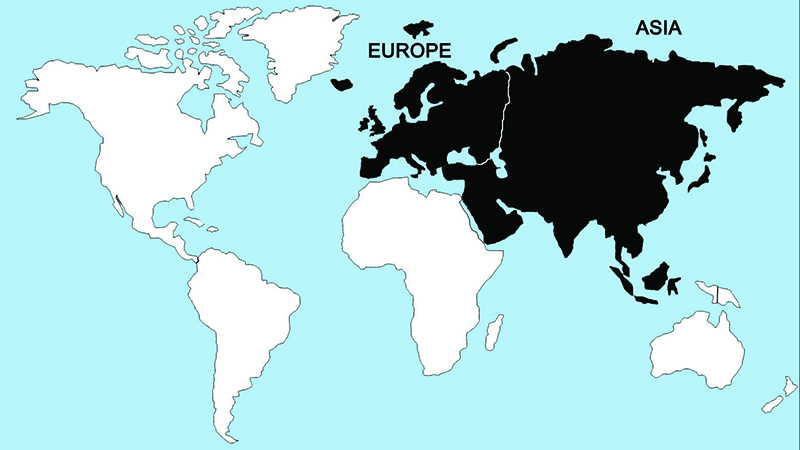Red-breasted Goose

Red-breasted geese are highly vocal and relatively aggressive among themselves, and perhaps their unusually bold coloration is related to its role in emphasizing their threat displays, which in part involve a vibration of the "mane" feathers and involves mutual head dipping alternated with a very erect attitude as the male faces the female.
These very small geese arrive on their arctic breeding grounds in small flocks of 3–15 birds, at about the time that the tundra is starting to become free of snow and grasses are starting to sprout. The birds often nest in small colonies of four or five pairs, often on steep river banks, in shrub- or grass-covered gullies or ravines, or in small depressions on sloping ground. The nests are often quite conspicuous, and almost invariably the birds nest in close vicinity to peregrine falcons or rough-legged hawks, or even near colonies of larger gulls such as glaucous gulls or herring gulls. It was reported in one study that 19 of 22 peregrine nests had up to five red-breasted geese pairs nesting nearby, from as close as 50–300 feet away from the peregrine nest. This remarkable nesting association apparently evolved as an anti-fox adaptation. The clutch size is typically from 3–7 eggs, and five eggs would represent the normal clutch. Incubation is performed by the female alone, but the male remains nearby throughout the incubation period of 23–25 days. Hatching typically occurs by the end of July, and molting by adults must begin at about the same time, since most of the adults and juveniles are flying by the last third of August, suggesting a very short fledging period for the young.
Regions Birds Are Found

Collection Location & Year
Russia - Siberia 2002
Taxonomy
| Order | Anseriformes |
|---|---|
| Family | Anatidae |
| Tribe | Anserini |
| Species | Branta |
| Genus | ruficollis |
Gender
Male
References
- Johnsgard, P. A. 1978. Ducks, Geese and Swans of the World. Lincoln, NE: Univ. of Nebraska Press.
- Elliot, A., J. del Hoyo, J. Sargatal, and C. Imboden, eds. 1992. Handbook of Birds of the World. Vol. 1 (Ostriches to Ducks). Barcelona, Spain: Lynx Editions.
- Kear, J. 2005. Ducks, Geese and Swans. London, UK: Oxford University Press.